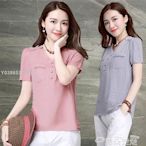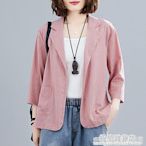棉麻上衣亞麻 相關
廣告立領設計,高彈性不勒脖!胸口立體logo,增添時尚穿搭感,雙面細緻磨絨,不易起毛球,手刀搶購! 冬季必備內搭!材質舒爽,透氣不悶汗,袖口&下擺精緻包邊,不易洗後變形,限時優惠中,速購!
- 踩屎拖2.0任3雙$1500!
後跟加高氣墊,舒壓減震踩得到
可拆式鞋墊,簡單清潔0死角!
- 新品登場【雙面衝鋒衣】
兩面皆可穿,機能時尚不怕天冷雨
SGS檢驗保證,蓄熱防潑一級棒!
- ONE BOY輕鋒衣4.0全面特惠
輕鋒衣任2件只要$2500
體驗有一件應萬變的方便
- Skin系列
最新主打SkinBra舒服得像沒穿一樣
打造舒適裸膚感 男女生都不能錯過
- 踩屎拖2.0任3雙$1500!
搜尋結果
 $758老 女棉麻上衣 亞麻上衣 年人夏裝女奶奶裝棉麻套裝薄款60歲媽媽綿綢兩件套老人衣服-梅梅服飾梅梅服飾
$758老 女棉麻上衣 亞麻上衣 年人夏裝女奶奶裝棉麻套裝薄款60歲媽媽綿綢兩件套老人衣服-梅梅服飾梅梅服飾 $412棉麻上衣亞麻女裝棉麻上衣2021夏裝新款小衫冰絲襯衫短袖薄款寬鬆女士t恤lif25500半島潮品Gou
$412棉麻上衣亞麻女裝棉麻上衣2021夏裝新款小衫冰絲襯衫短袖薄款寬鬆女士t恤lif25500半島潮品Gou $296酷利男=棉麻上衣 亞麻衫 V領襯衫 襯衣亞麻短款女上衣簡約純色艺文清新H423.9106酷利男
$296酷利男=棉麻上衣 亞麻衫 V領襯衫 襯衣亞麻短款女上衣簡約純色艺文清新H423.9106酷利男 $488【熱賣精選】棉麻上衣亞麻休閒西裝薄短外套女春秋百搭年新款韓版寬松洋氣Y3322555635
$488【熱賣精選】棉麻上衣亞麻休閒西裝薄短外套女春秋百搭年新款韓版寬松洋氣Y3322555635![棉麻上衣 亞麻女裝2020夏季新款潮棉麻t恤女士大碼寬鬆短袖遮肚子簡約上衣 YYUW89453 棉麻上衣 亞麻女裝2020夏季新款潮棉麻t恤女士大碼寬鬆短袖遮肚子簡約上衣 YYUW89453]() $359棉麻上衣 亞麻女裝2020夏季新款潮棉麻t恤女士大碼寬鬆短袖遮肚子簡約上衣 YYUW89453Helena 潮流商城
$359棉麻上衣 亞麻女裝2020夏季新款潮棉麻t恤女士大碼寬鬆短袖遮肚子簡約上衣 YYUW89453Helena 潮流商城![拉風賣場-棉麻上衣亞麻衫V領襯衫襯衣亞麻短款女上衣簡約純色藝文清新 2 .910-快速安排 拉風賣場-棉麻上衣亞麻衫V領襯衫襯衣亞麻短款女上衣簡約純色藝文清新 2 .910-快速安排]() $262拉風賣場-棉麻上衣亞麻衫V領襯衫襯衣亞麻短款女上衣簡約純色藝文清新 2 .910-快速安排拉风店
$262拉風賣場-棉麻上衣亞麻衫V領襯衫襯衣亞麻短款女上衣簡約純色藝文清新 2 .910-快速安排拉风店![Cavwell-棉麻上衣亞麻衫V領襯衫襯衣亞麻短款女上衣簡約純色艺文清新 2 910-可開統編 Cavwell-棉麻上衣亞麻衫V領襯衫襯衣亞麻短款女上衣簡約純色艺文清新 2 910-可開統編]() $242Cavwell-棉麻上衣亞麻衫V領襯衫襯衣亞麻短款女上衣簡約純色艺文清新 2 910-可開統編Cavwell-卡夫
$242Cavwell-棉麻上衣亞麻衫V領襯衫襯衣亞麻短款女上衣簡約純色艺文清新 2 910-可開統編Cavwell-卡夫![廣東普寧白襯衫女款春款2024新款女士棉麻上衣亞麻高端春秋襯衣女_佳美優品 廣東普寧白襯衫女款春款2024新款女士棉麻上衣亞麻高端春秋襯衣女_佳美優品]() $728廣東普寧白襯衫女款春款2024新款女士棉麻上衣亞麻高端春秋襯衣女_佳美優品佳美優品
$728廣東普寧白襯衫女款春款2024新款女士棉麻上衣亞麻高端春秋襯衣女_佳美優品佳美優品![大匯倉=棉麻上衣 亞麻衫 V領襯衫 襯衣亞麻短款女上衣簡約純色艺文清新H423.9106 大匯倉=棉麻上衣 亞麻衫 V領襯衫 襯衣亞麻短款女上衣簡約純色艺文清新H423.9106]() $296大匯倉=棉麻上衣 亞麻衫 V領襯衫 襯衣亞麻短款女上衣簡約純色艺文清新H423.9106大匯倉(2/20開始接單)
$296大匯倉=棉麻上衣 亞麻衫 V領襯衫 襯衣亞麻短款女上衣簡約純色艺文清新H423.9106大匯倉(2/20開始接單)![【涼夏短T】[韓國K.W.]火紅色涼爽棉麻上衣(中大尺碼/涼感/亞麻/輕薄/小香風/雪紡) 【涼夏短T】[韓國K.W.]火紅色涼爽棉麻上衣(中大尺碼/涼感/亞麻/輕薄/小香風/雪紡)]() $595$699【涼夏短T】[韓國K.W.]火紅色涼爽棉麻上衣(中大尺碼/涼感/亞麻/輕薄/小香風/雪紡)購物中心
$595$699【涼夏短T】[韓國K.W.]火紅色涼爽棉麻上衣(中大尺碼/涼感/亞麻/輕薄/小香風/雪紡)購物中心![【涼夏短T】[韓國K.W.]典韻嚮宴涼爽棉麻上衣(中大尺碼/涼感/亞麻/輕薄/小香風/雪紡) 【涼夏短T】[韓國K.W.]典韻嚮宴涼爽棉麻上衣(中大尺碼/涼感/亞麻/輕薄/小香風/雪紡)]() $595$699【涼夏短T】[韓國K.W.]典韻嚮宴涼爽棉麻上衣(中大尺碼/涼感/亞麻/輕薄/小香風/雪紡)購物中心
$595$699【涼夏短T】[韓國K.W.]典韻嚮宴涼爽棉麻上衣(中大尺碼/涼感/亞麻/輕薄/小香風/雪紡)購物中心![【涼夏短T】[韓國K.W.]波卡圓舞涼爽棉麻上衣(中大尺碼/涼感/亞麻/輕薄/小香風/雪紡) 【涼夏短T】[韓國K.W.]波卡圓舞涼爽棉麻上衣(中大尺碼/涼感/亞麻/輕薄/小香風/雪紡)]() $595$699【涼夏短T】[韓國K.W.]波卡圓舞涼爽棉麻上衣(中大尺碼/涼感/亞麻/輕薄/小香風/雪紡)購物中心
$595$699【涼夏短T】[韓國K.W.]波卡圓舞涼爽棉麻上衣(中大尺碼/涼感/亞麻/輕薄/小香風/雪紡)購物中心
Linamarin is a cyanogenic glucoside found in the leaves and roots of plants such as cassava, lima beans, and flax.It is a glucoside of acetone cyanohydrin.Upon exposure to enzymes and gut flora in the human intestine, linamarin and its methylated relative lotaustralin can decompose to the toxic chemical hydrogen cyanide; hence food uses of plants that contain significant quantities of ...
- C₁₀H₁₇NO₆
- 247.248 g/mol
- 143 to 144 °C (289 to 291 °F; 416 to 417 K)
- good
Cotton is a soft, fluffy staple fiber that grows in a boll, or protective case, around the seeds of the cotton plants of the genus Gossypium in the mallow family Malvaceae. The fiber is almost pure cellulose, and can contain minor percentages of waxes, fats, pectins, and water. Under natural conditions, the cotton bolls will increase the ...
- NYI
- 0.01
- Energy
- 5 USD
SpongeBob SquarePants is an American animated television series created by marine science educator and animator Stephen Hillenburg that aired on Nickelodeon as a sneak peek after the 1999 Kids' Choice Awards on May 1, 1999, and officially premiered on July 17, 1999. It chronicles the adventures of the title character and his aquatic friends in ...
- Etymology
- Philosophical Background
- Practice
- History
- Styles
- Yin and Yang
- Health
- Further Reading
The name "tai chi", the most common English spelling, is not a standard romanization of the Chinese name for the art (simplified Chinese: 太极拳; traditional Chinese: 太極拳; lit. 'Taiji boxing'). The Chinese name was first commonly written in English using the Wade–Giles system as "tʻai chi chʻüan". But English speakers abbreviated it to "tʻai chi" and ...
Chinese philosophy, particularly Taoist and Confucian thought, forms the conceptual background to tai chi. Early tai chi texts include embedded quotations from early Chinese classics like the I Ching, Great Learning, Book of Documents, Records of the Grand Historian, and Zhuangzi, as well as from famous Chinese thinkers like Zhu Xi, Zhou Dunyi, and...
Traditionally, the foundational tai chi practice consists of learning and practicing a specific solo forms or routines (taolu). This entails learning a routine sequence of movements that emphasize a straight spine, abdominal breathing and a natural range of motion. Tai chi relies on knowing the appropriate change in response to outside forces, as w...
Early development
Tai chi's formative influences came from practices undertaken in Taoist and Buddhist monasteries, such as Wudang, Shaolin and The Thousand Year Temple in Henan. The early development of tai chi proper is connected with Henan's Thousand Year Temple and a nexus of nearby villages: Chen Village, Tang Village, Wangbao Village, and Zhaobao Town. These villages were closely connected, shared an interest in the martial arts and many went to study at Thousand Year Temple (which was a syncretic temple...
Standardization
In 1956 the Chinese government sponsored the Chinese Sports Committee (CSC), which brought together four wushu teachers to truncate the Yang family hand form to 24 postures. This was an attempt to standardize tai chi for wushutournaments as they wanted to create a routine that would be much less difficult to learn than the classical 88 to 108 posture solo hand forms. Another 1950s form is the "97 movements combined tai chi form", which blends Yang, Wu, Sun, Chen, and Fu styles. In 1976, they...
Chinese origin
The five major styles of tai chi are named for the Chinese families who originated them: 1. Chen style (陳氏) of Chen Wangting(1580–1660) 2. Yang style (楊氏) of Yang Luchan(1799–1872) 3. Wu/Hao style (武郝氏) of Wu Yuxiang (1812–1880) and Hao Weizhen(1842–1920) 4. Wu style (吳氏) of Wu Quanyou (1834–1902) and his son Wu Jianquan(1870–1942) 5. Sun style (孫氏) of Sun Lutang(1861–1932) The most popular is Yang, followed by Wu, Chen, Sun, and Wu/Hao.The styles share underlying theory, but their training d...
More traditional practitioners hold that the two aspects of health and martial arts make up the art's yin and yang. The "family" schools present their teachings in a martial art context, whatever the intention of their students.
Tai chi's health training concentrates on relieving stress on the body and mind. In the 21st century, tai chi classes that purely emphasize health are popular in hospitals, clinics, community centers and senior centers. Tai chi's low-stress training method for seniors has become better known. Clinical studies exploring tai chi's effect on specific ...
Books
1. Agar-Hutton, Robert (2018). The Metamorphosis of Tai Chi: Created to kill; evolved to heal; teaching peace. Ex-L-Ence Publishing. ISBN 978-1-9164944-1-1. 2. Bluestein, Jonathan (2014). Research of Martial Arts. CreateSpace. ISBN 978-1-4991-2251-0. 3. Bond, Joey (1999). See Man Jump See God Fall: Tai Chi Vs. Technology. International Promotions Promotion Pub. ISBN 978-1-57901-001-0. 4. Choy, Kam Man (1985). Tai Chi Chuan. San Francisco, California: Memorial Edition 1994.[ISBN missing] 5. Da...
Magazines
1. Taijiquan Journal ISSN 1528-6290 2. T'ai Chi Magazine ISSN 0730-1049Wayfarer Publications. Bimonthly.
Following their victory, the Khmer Rouge, who were led by Pol Pot, Nuon Chea, Ieng Sary, Son Sen, and Khieu Samphan, immediately set about forcibly evacuating the country's major cities. In 1976, they renamed the country Democratic Kampuchea. The Khmer Rouge regime was highly autocratic, totalitarian, and repressive.
Asbestos (/ æ s ˈ b ɛ s t ə s, æ z-,-t ɒ s / ass-BES-təs, az-, - toss) is a naturally occurring fibrous silicate mineral.There are six types, all of which are composed of long and thin fibrous crystals, each fibre (particulate with length substantially greater than width) being composed of many microscopic "fibrils" that can be released into the atmosphere by abrasion and other processes.
An electromagnetic pulse ( EMP ), also referred to as a transient electromagnetic disturbance ( TED ), is a brief burst of electromagnetic energy. The origin of an EMP can be natural or artificial, and can occur as an electromagnetic field, as an electric field, as a magnetic field, or as a conducted electric current.





![【涼夏短T】[韓國K.W.]火紅色涼爽棉麻上衣(中大尺碼/涼感/亞麻/輕薄/小香風/雪紡) 【涼夏短T】[韓國K.W.]火紅色涼爽棉麻上衣(中大尺碼/涼感/亞麻/輕薄/小香風/雪紡)](https://s.yimg.com/fz/api/res/1.2/mRV7IHU9DsR7FURwYd0IlA--~C/YXBwaWQ9c3JjaGRkO2ZpPWZpbGw7aD0xNDY7cT04MDt3PTE0Ng--/https://s.yimg.com/zp/MerchandiseImages/EDF73291E0-SP-13887330.jpg)
![【涼夏短T】[韓國K.W.]典韻嚮宴涼爽棉麻上衣(中大尺碼/涼感/亞麻/輕薄/小香風/雪紡) 【涼夏短T】[韓國K.W.]典韻嚮宴涼爽棉麻上衣(中大尺碼/涼感/亞麻/輕薄/小香風/雪紡)](https://s.yimg.com/fz/api/res/1.2/dm0yeb.6TO06.Kvpkw0Qaw--~C/YXBwaWQ9c3JjaGRkO2ZpPWZpbGw7aD0xNDY7cT04MDt3PTE0Ng--/https://s.yimg.com/zp/MerchandiseImages/C1E3FDB1DC-SP-13887643.jpg)
![【涼夏短T】[韓國K.W.]波卡圓舞涼爽棉麻上衣(中大尺碼/涼感/亞麻/輕薄/小香風/雪紡) 【涼夏短T】[韓國K.W.]波卡圓舞涼爽棉麻上衣(中大尺碼/涼感/亞麻/輕薄/小香風/雪紡)](https://s.yimg.com/fz/api/res/1.2/Eyw9YlPLtADuqfcY.Hw5wg--~C/YXBwaWQ9c3JjaGRkO2ZpPWZpbGw7aD0xNDY7cT04MDt3PTE0Ng--/https://s.yimg.com/zp/MerchandiseImages/792E8B3BE8-SP-13887837.jpg)
